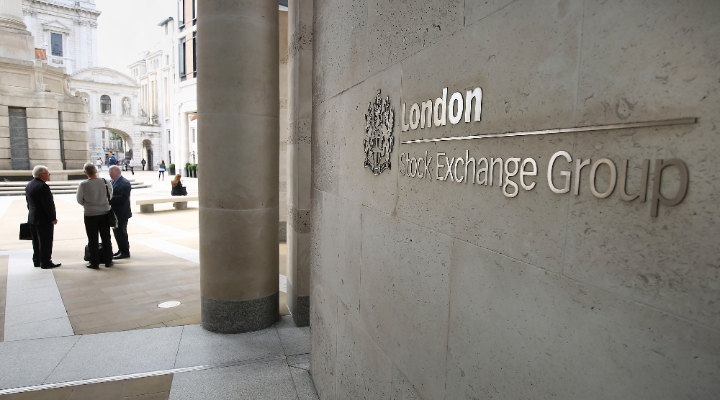
The evolution of the cryptocurrency landscape has been an exhilarating journey filled with astonishing stories of rags-to-riches wealth, regulatory hurdles, and alleged fraud.
Despite these challenges, the cryptocurrency market has surpassed the remarkable point of over $1 trillion (£787.5 billion) in market capitalisation in the second quarter of 2023. It’s a point 10 years in the making. The first crypto-related fund, the Bitcoin Investment Trust (BIT), was launched in 2013, and over the years the number of crypto-related funds has skyrocketed.
The first key turning point was the bull run of 2017, when the price of Bitcoin shot up. As Bitcoin rose, so did the number of crypto products. Subsequently, between 2018 and 2020, the market lost most of its gains and several funds faced closure. The post-Covid-19 era then brought another bull run in the crypto market and the number of crypto products once more exploded across the United States and Europe, demanding the attention of investors worldwide.
The euphoria was tainted in the crypto winter. 2022 proved to be a disastrous for cryptocurrencies, with notable liquidations at Terra, Three Arrows, and FTX. Until that point, most crypto investments revolved around Crypto-based ETFs and Trusts.
Despite the turbulence, crypto has managed to remain in the spotlight, thanks to recent developments at the Securities and Exchange Commission, where the US regulator is reviewing proposals for Crypto Spot ETFs and the launch of leveraged futures ETFs.
A Bull Market Phenomenon
Crypto managed investment products come in various sizes and shapes, including physical crypto exchange-traded products (ETPs), synthetic crypto ETPs, and inverse crypto ETPs.
The below visual demonstrates the recent launches and shutdowns of crypto ETPs as discussed in our earlier paper Cryptos Are a Bull Market Phenomenon. Over the last year, the number of funds being liquidated has risen significantly. On average, all the funds that get liquidated have an average life of less than one year and average assets of around $500,000 at shutdown.
Leveraged Crypto ETPs
The latest product to join the crypto bandwagon is leveraged crypto ETPs. The SEC approved the first ever leveraged crypto ETF with the launch of Volatility Shares 2x Bitcoin Strategy ETF (BITX) in late June 2023. BITX seeks to provide daily investment results, before fees and expenses, which correspond to twice the performance of the S&P CME Bitcoin Futures Daily Roll Index for a single day. The fund does not invest directly in bitcoin. Instead, it seeks to mimic the performance of bitcoin futures contracts daily.
Like all leveraged products, these are inherently highly risky. Add to that the risk associated with the overall crypto market, the performance of leveraged crypto ETFs can be highly unpredictable.
The chart above shows this ETF's daily returns compares it with the return of Bitcoin and S&P 500. As is evident, the leveraged ETF’s daily returns have been highly volatile, with a standard deviation of 4.3% daily. In comparison, Bitcoin had a daily standard deviation of about 1.6 % and the broader equity markets had a daily standard deviation of around 1% during the same period. This shows the asset is not only much riskier than equities, but also much more volatile than Bitcoin itself.
One salient feature of leveraged products is their downward returns bias, which arises from the compounding effect of leveraged returns. As these financial instruments aim to magnify the daily performance of the underlying asset, fluctuations over time can lead to underperformance compared to the asset's cumulative return. The compounding effect can cause the leveraged product to lose value – even when the underlying asset returns to its initial level.
For instance, suppose Bitcoin Futures (the underlying market for BITX) and BITX are both currently trading at $100. If the futures fall by 10% in a day, BITX itself can be expected to fall by 20% on that day. This brings the price of the futures contract to $90 and the price of BITX to $80. If on the subsequent day, Bitcoin Futures rise by 11.1%, the price of the future goes back to the original price of $100. However, BITX rises by 22.2% which brings its price to $97.76 – still short of the original price of $100 by 2.24%. This negative performance bias can compound significantly over time. This is explained in the below visual. The phenomenon is more pronounced in volatile markets, making leveraged products better suited for short-term trading.
As of July 17, the fund has assets under management to the tune of $22.5 million. Much like other digital assets funds, it too has a high expense ratio of 1.85%.
Spot Price-Based Crypto ETFs
The SEC was rigorous in rejecting crypto spot ETF proposals. Its concerns centred around the regulation of underlying Crypto Spot exchanges leading to market manipulation and liquidity issues.
However, recently SEC started accepting applications from several leading fund houses, including Blackrock, Fidelity, Vaneck, WisdomTree, and Bitwise for US crypto spot ETFs. While the formal approval process may take some time to be completed, it’s clear change is coming. What’s more, Europe is ready to launch the first ever spot price based crypto ETF.
After a delay forced by the crypto winter of 2022, Jacobi Asset Management has now announced the launch of Europe’s first Bitcoin ETF. Registered in Guernsey, the new ETF will expose investors to actual shares, unlike previous crypto products.
The sequence of events has brought around renewed optimism into the crypto market, pushing bitcoin and related investment vehicles higher. Still, traders in the perpetual futures market tied to bitcoin remain risk averse, unwilling to take on high leverage.
Despite bitcoin holding the $30,000 mark for quite some time now, data tracked by Blockware Solutions show the ratio of open interest in BTC perpetual futures to bitcoin's market cap has been locked in a narrow range around 1.5% since late June. The ratio remains well below the high of 2.6% seen in September last year. The ratio is a popular indicator of the risk appetite of the investors. A stagnant ratio indicates money has been slow to flow into the market despite the Bitcoin price rise.
Another metric that can be used to gauge investor risk sentiment is the estimated leverage ratio (ELR), which estimates the amount of leverage in use on average. The ELR has dropped significantly since September 2022 and has stayed in the same ballpark since May 2023. Despite the apparent bullishness (owing to the news of launch of new products), investors and traders remain cautious and have not increased their leverage, even with Bitcoin inching higher.
Similar products were also launched in other countries, including Canada, Brazil, and Dubai. But they received limited investor attention. The average assets under management (AUM) of a few of the earliest and largest Canadian crypto spot ETFs has changed over time, and it shows the same pattern: optimism when products are launched followed by a period of dull growth and poor performance.
No Hedge, No Edge
A major reason for investors flocking to Crypto products has been the belief that they can provide a reasonable hedge against equity and inflation. However, the correlation of crypto returns with both US CPI and the Morningstar Global Markets Index shows massive swings on both sides. This suggests a lack of conclusive evidence to support the notion that crypto-exposed products could serve as a reliable hedge against inflation or equity volatility.
Fool’s Gold?
Many investors and influencers have comparied crypto and gold, drawing parallels between the emergence of gold investing in the 1970s and the modern rise of crypto. Back then, gold was a largely unregulated asset and the launch of gold products and ETFs in subsequent years helped its adoption as a reliable alternative asset by conventional investors.
Their hypothesis is crypto should be thought of as a commodity, and that, much like gold, the launch of mainstream crypto products will help with the mainstream adoption of crypto too. However, gold does provide an established hedge against both equity and inflation. The chart below shows that, during any major equity market correction, Gold has risen to the mark and worked as a perfect hedge. Crypto, on the other hand, has shown no such benefits. We believe cryptocurrencies should not be identified as an asset class or as a commodity. Why? Because it has no fundamental features that resemble either.
The Bottom Line
Data suggests the optimistic turn of events has had almost no significant impact on investor outcomes. Crypto investors still seem to be concerned with the challenges the space represents, especially the volatility and the regulatory uncertainty around it. Perhaps the launch of the spot ETF is not as revolutionary as is being portrayed to be. Even if it is, few recent crypto products have lived past their initial hype, so this one may suffer the same fate.
As such, it is important investors take a long-term perspective and are prudent about market conditions. We believe retail investors are better off waiting on the sidelines to see if these products see the light of the day and can garner enough traction, let alone convincing performance. Thorough due diligence is very important, because there is simply more to lose than to gain.











:quality(80)/cloudfront-us-east-1.images.arcpublishing.com/morningstar/MNPB4CP64NCNLA3MTELE3ISLRY.jpg)
















